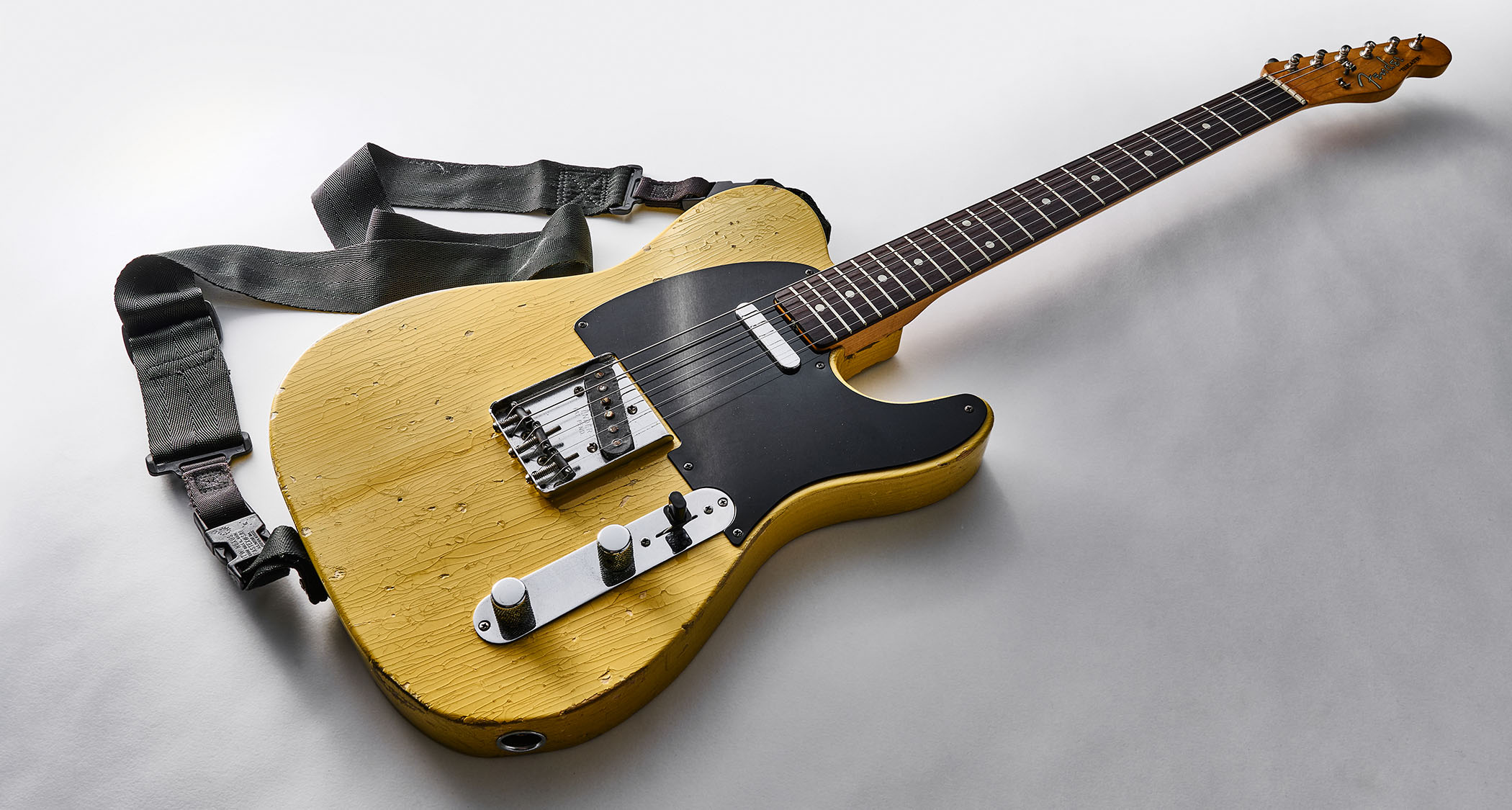“I say to people: ‘I’m sorry to tell you, but in 20 years, your finish will crack because it’s gonna get thinner. But it’ll sound better – so look forward to it!’” How Gibson brought relic’d finishes to its iconic acoustic guitars with the Murphy Lab
Senior product development manager, Robi Johns, tells us why playing Gibson’s new Heavy Aged Acoustic Collection is like stepping into a time machine

Perhaps the greatest compliment we can pay Gibson’s Murphy Lab Heavy Aged Acoustic Collection is that we are terrified to play them.
Faced with the neckwear, soundhole scuffs and belt-buckle scratches of this five-strong historic line-up, the abiding impression is of inspecting the personal effects of some bygone billionaire collector in the moments before they are swaddled in bubblewrap and shipped to the auction house or family vault.
To lift such an instrument from its stand, to run your fingers over its blemished fretboard, to hear its ancient voice sing of centuries past is a heart-in-mouth moment, loaded with both joy and a faint dread that a curator is about to burst in and admonish you for handling it without white cotton gloves.
The twist, of course, is that these guitars are in fact younger than yesterday, representing the latest cache of releases from Gibson’s Murphy Lab.

The life’s work of Tom Murphy surely needs no introduction. Now in his mid‑’70s, the undisputed godfather of guitar relicing has elevated the practice to a branch of science (and changed the perception of pre-worn instruments from gimmick to art form).
Since the luthier returned to Gibson at the turn of the decade to establish the Murphy Lab, we’ve seen some of his most mouthwatering treatments applied to a wishlist of electric instruments. But as senior product development manager, Robi Johns, tells us, Murphy’s unprecedented swerve into aged acoustic guitars since 2023 has added a whole new string to his bow.
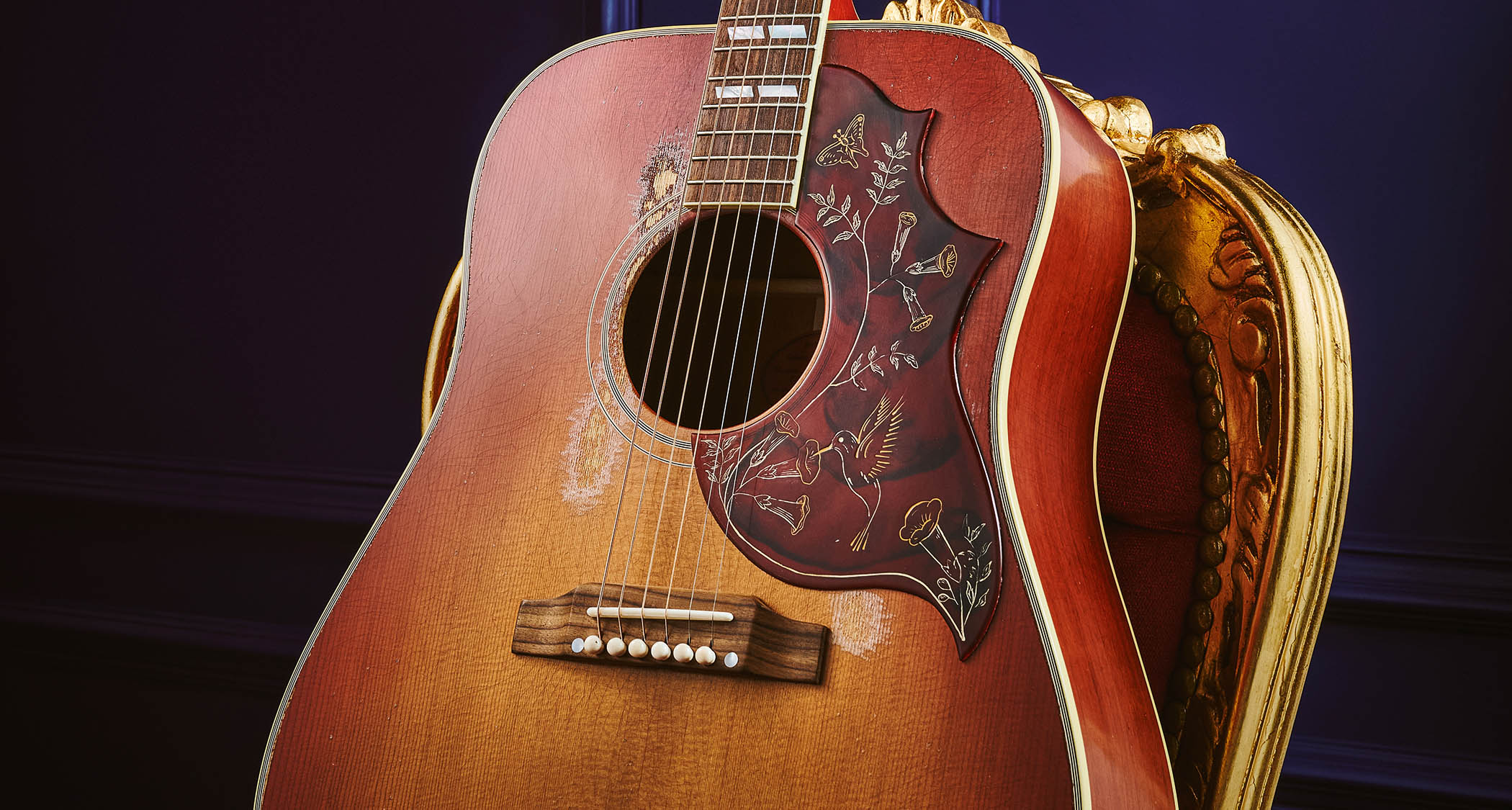
The Murphy Lab has been creating stunning aged electrics for a few years, but now the acoustic side of the operation is in full swing. Are you pleased with the output so far?
All the latest guitar news, interviews, lessons, reviews, deals and more, direct to your inbox!
“More than pleased; I’m in awe. Because this has been an evolution. Tom Murphy created his finishes to make the electrics feel and look like road-worn instruments. Then Gibson said, ‘Hey, let’s do some acoustics this way, too.’ That was about four years ago. My initial thought was, ‘I don’t know if people are looking for beat-up acoustics.’
“But we released five models with light ageing in 2023. Now, I hear from the connoisseur artists: ‘I was down in Nashville and I ran into this Murphy Lab Light Aged Jumbo, and I can’t sleep any more because I just gotta have it. But they said they couldn’t sell it because it’s a display model. Please can you pull some strings so I can buy it?’
“Last year, we announced the Murphy Lab Heavy Aged Acoustic Collection and they’re just starting to hit the market. I actually said to Tom, ‘Thank you, you’ve created a time machine for us.’”
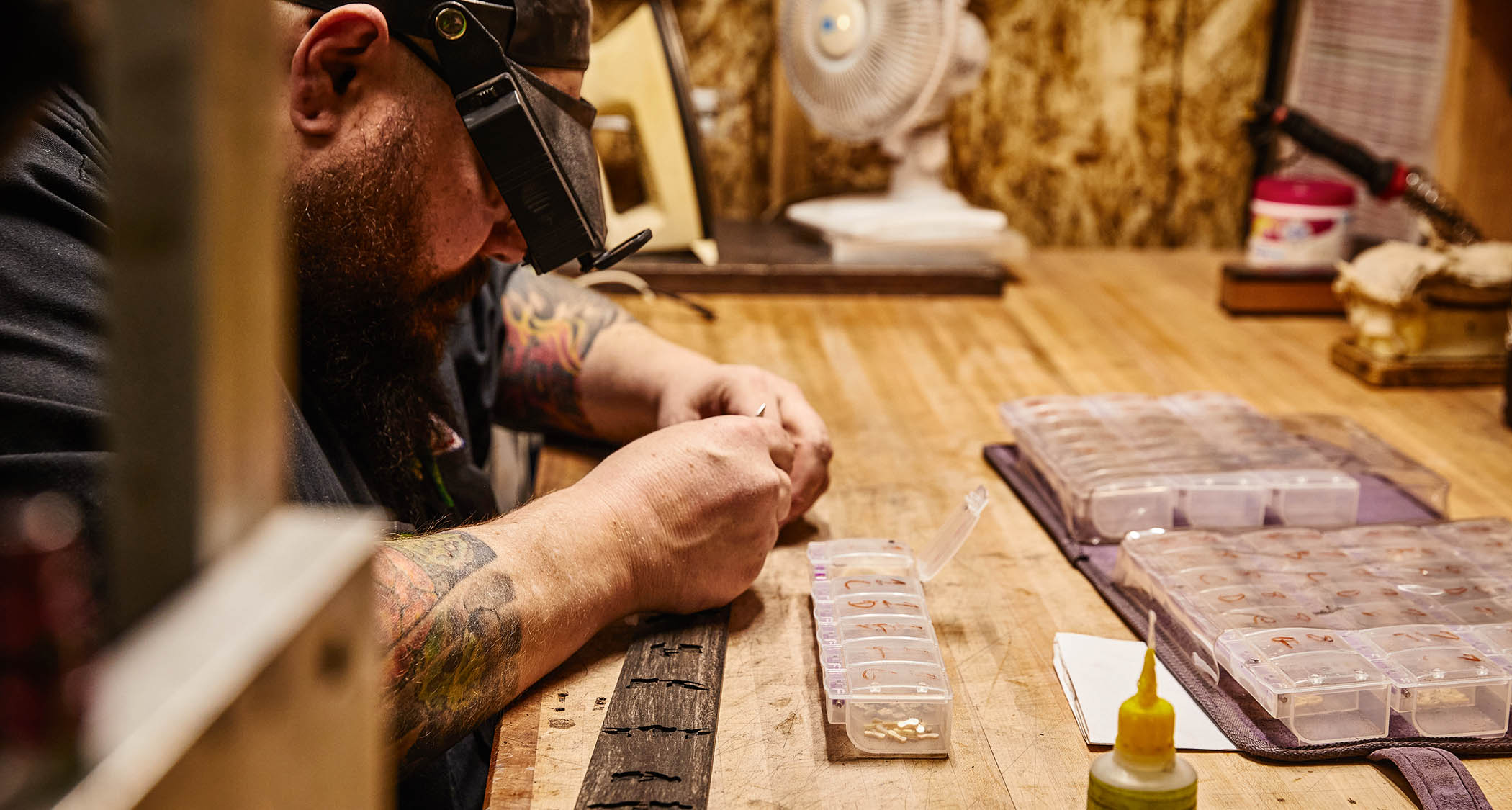
How were the five models that feature in the new Heavy Aged Collection selected?
“Well, the 1942 Banner J-45, that was the year of release and it became our bestseller, the bread and butter Gibson dreadnought – even though it was round-shouldered. Then there’s the 1936 Advanced Jumbo, which was like the J-45 before the J-45 existed.
“And the reason we chose that for the Heavy Aged series was because it’s definitely the most powerful. It’s a long-scale instead of a short-scale and that makes it more projecting. And it has a wider X-brace.
“In the 1940s, we went to a more condensed bracing pattern, which growls and distorts a little more when you hit it. But when you play the Advanced Jumbo from the 1930s, with that wide X, it barks at you. You hit it harder and it definitely sounds gritty.”
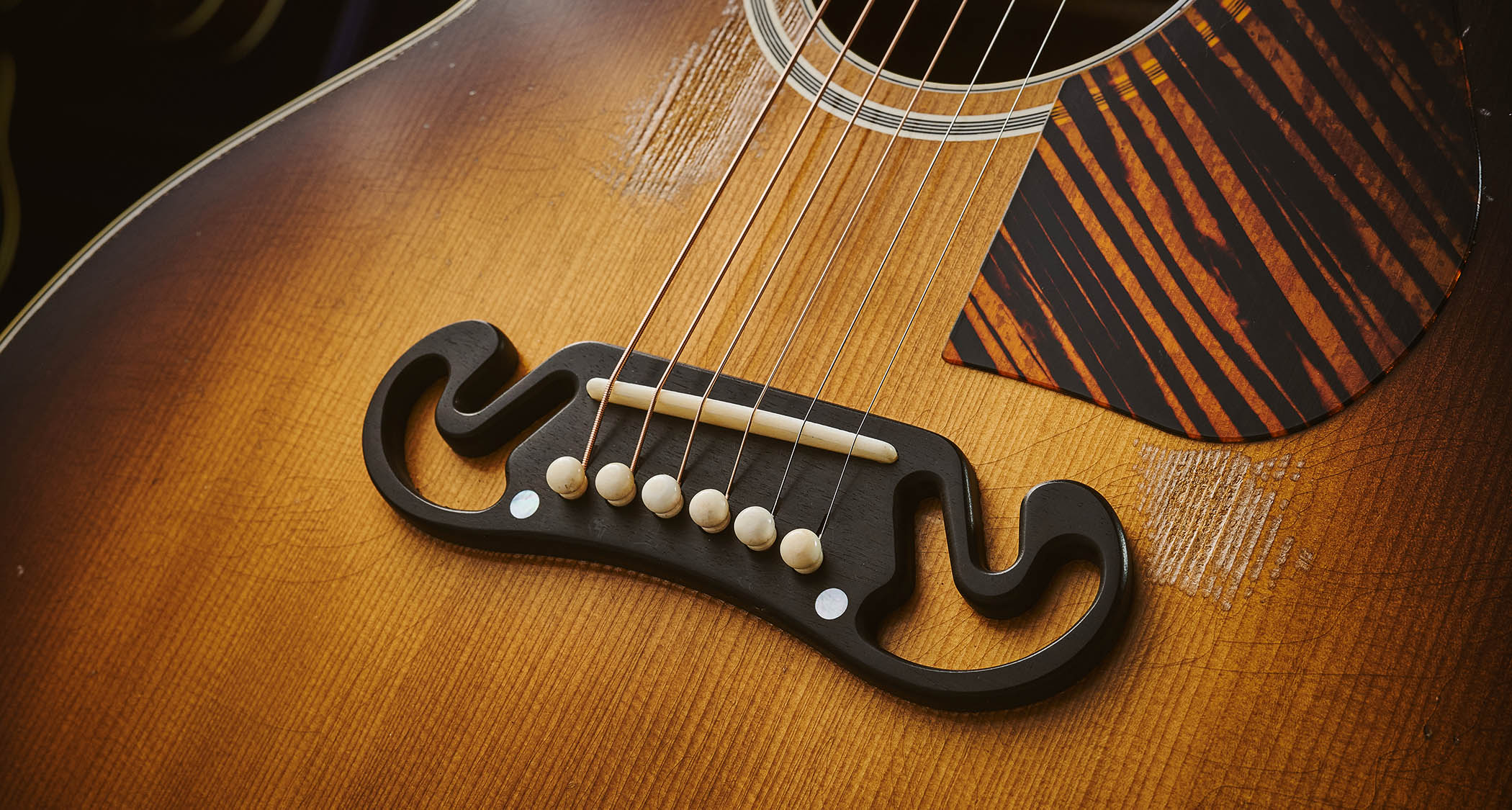
“Then, of course, there’s the 1939 SJ-100. The SJ-200 was released in 1938, and then we released the SJ-100, probably because it was the end of an era of economic instability in America and we wanted to get the prices down. So that model was $100 in 1939, I believe, while the SJ-200 was $200. The 1960 Hummingbird: that’s the quintessential year of its release.
“When the 1963 Country Western was released, people wanted a natural-looking dreadnought, and we included it in the Heavy Aged Collection because people would not let us alone! It just kept coming back up. So it’s society that has led us to these models because society responded to them.”
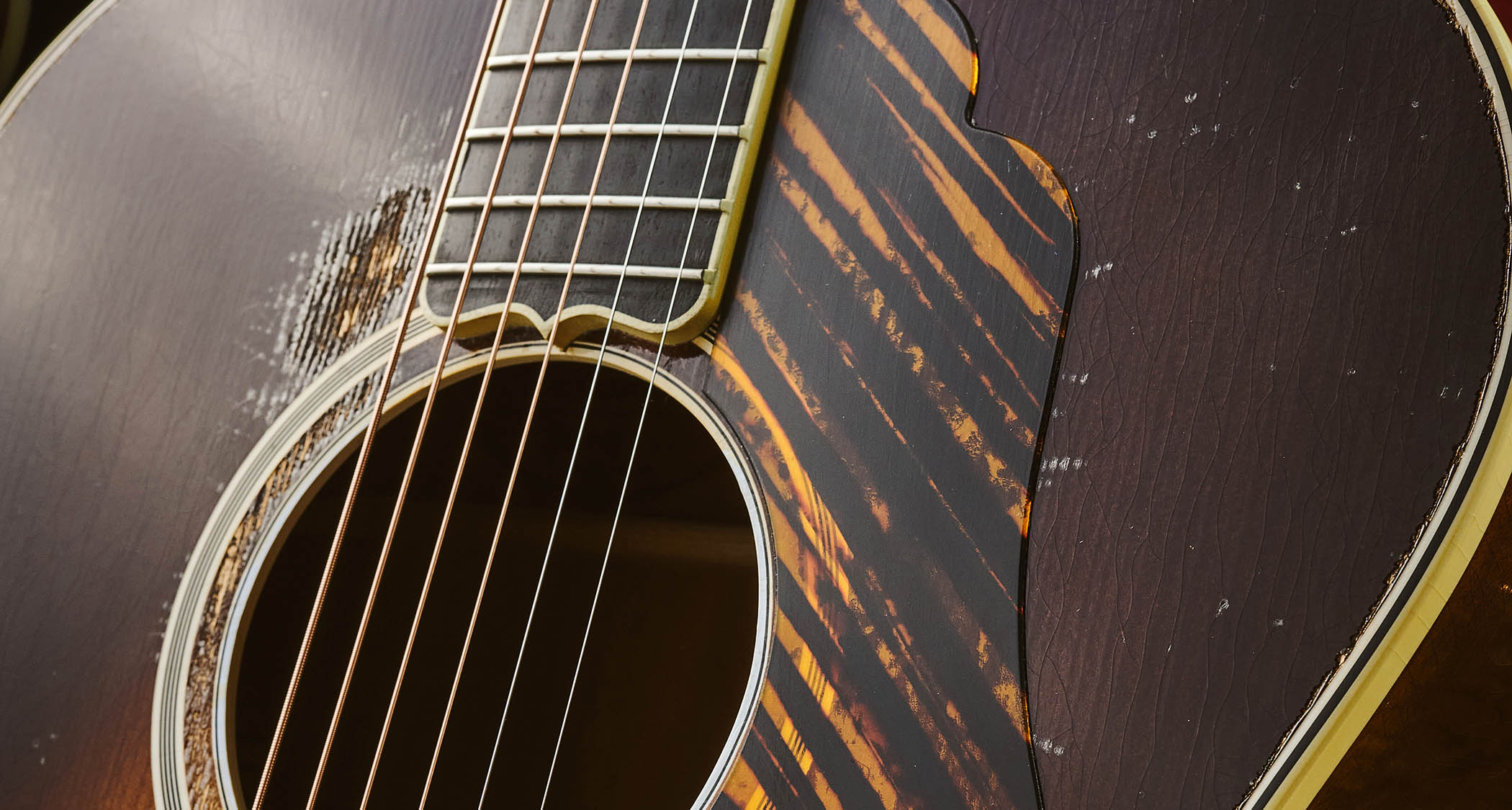
What would you say are the key elements that go into Gibson’s aged acoustics?
“They’re not necessarily built differently. Every guitar has the old dovetail neck-to-body joint – we were already doing that from 1989 onward, when we started this craftory. The luthiers at that time said, ‘We gotta compete with the old guitars that are already out there since 1926.’ We had a bar that was so high.
“Another of the key things – which a lot of people don’t know – is that we dome the tops, even on a flat-top. That gives us that really nice midrange, makes them sound really old. We use thermally aged tops to accelerate what happens to a piece of wood when it sits in a shop for 80 years. And we use hide glue on the braces of these guitars, both the Murphy Lab and Custom Historic models.”
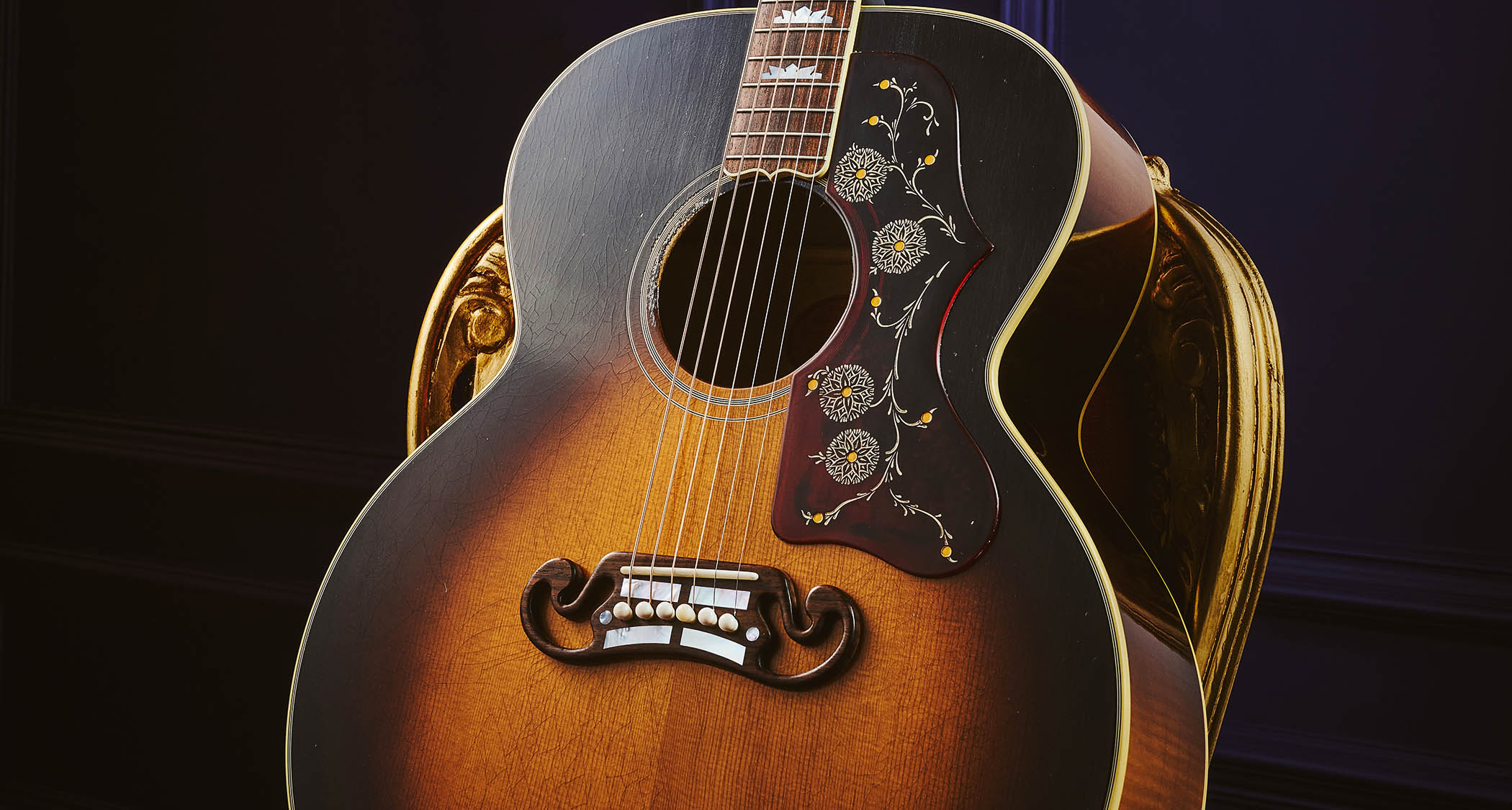
“So we were already doing a lot of this stuff to make our acoustics sound as vibrant as possible, and they already sounded pretty damn old. But the real magic of this collection is that up to this period of time we were using nitro lacquer, maybe 12 to 14 coats, with some sanding in between. But then we created a thinner version that was half as many coats.
“It wasn’t as smooth-looking, but it allowed the guitar to vibrate even more because it was thinner. When Tom created his new formula, he took out all the plasticisers and other solvents. All we have left is the cellulose. We put it on there and we’re listening to these guitars and it’s just unbelievable.”
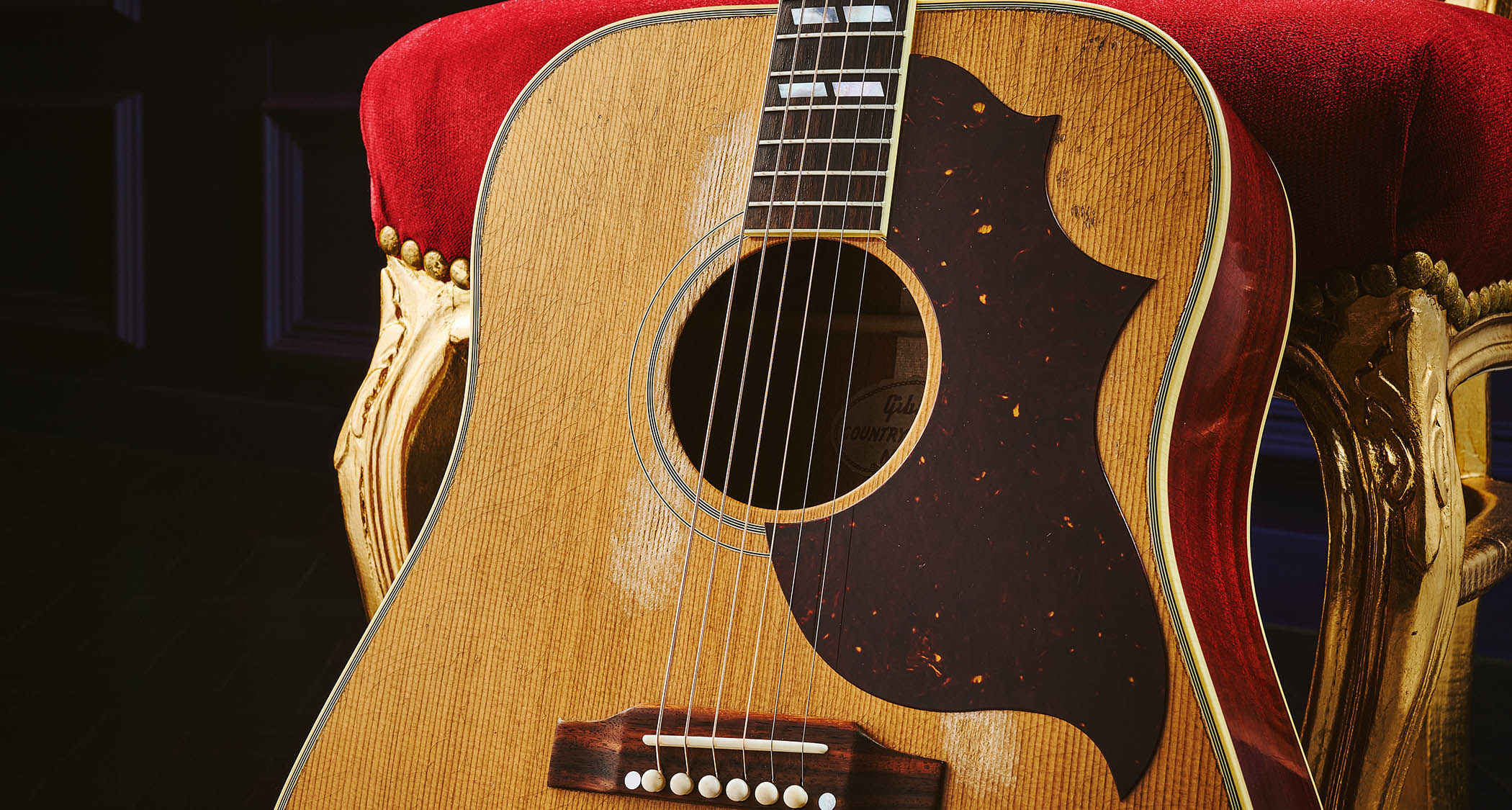
“Even as a new guitar, it sounds 100 years old. So by the turn of the millennium, we were already saying, ‘We’re getting closer and closer to a 100-year-old tone.’ But then, when Tom developed this finish we put on [the new collection], that was the last cherry on top.
“You know, a UV cure is a beautiful hard finish and I’m not gonna say it’s ‘bad’, it’ll just never change. That’s good for some people. But with the Murphy Lab acoustics, I say to people: ‘I’m sorry to tell you, but in about 20 years, your finish will probably crack because it’s gonna get thinner and thinner. But when it gets thinner and it cracks, it’ll sound better – so look forward to it!’ I can’t even imagine what these guitars will sound like in 50 years’ time.”
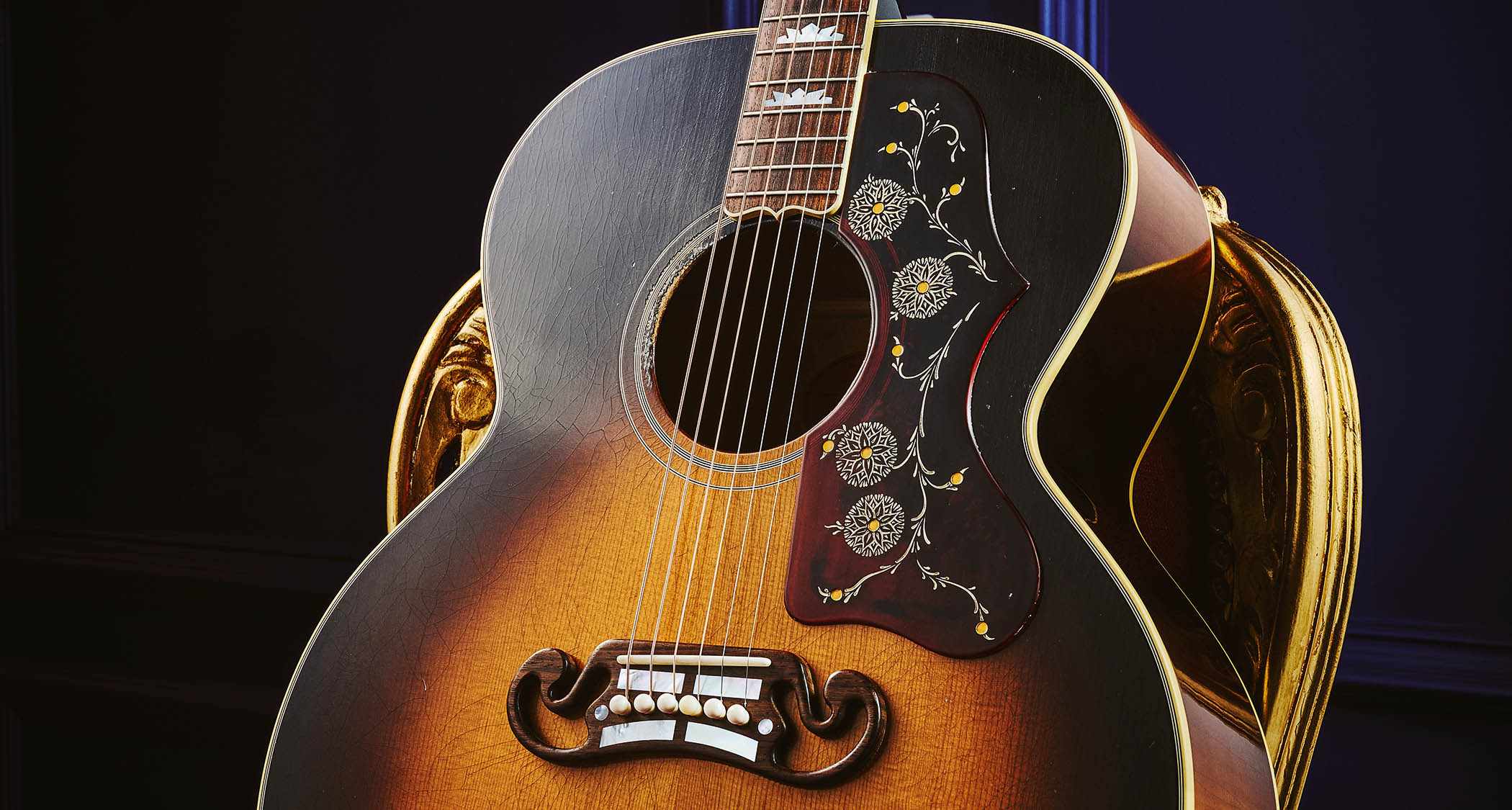
What are the processes by which you create the imperfections on these acoustics?
“It’s very human. We cool the instruments in a refrigerator to create this beautiful hairline cracking. We know what temperature, how long to do it, for which model. And then, it’s human beings who are wearing off the belt spot in the back or scraping off the finish, rubbing it with different tools, to create the look and touch of where it would have worn off.
“The finish is very brittle once it’s pulled out of the cooling chamber and we can crack it and peel parts of it off – or scratch it as if a pick was scratching against it for 40 years. Our technicians will use sandpaper, of course.
“But they’ll also invent different ways to create those marks, like the pick scratching. They might even say: ‘You know, when I use the end of my calliper, it looks good.’ They’ll use anything to make it work. And that gives it the character.”
“Now, that’s less about sound and more about the vibe and character of the guitar, which actually is psychoacoustic. The definition of that word is that you hear something based on the feel and the experience. It’s like if you ride a Harley-Davidson motorcycle, it’s noisy and it’s loud, and it’s not the most efficient motorcycle in the world, but it’s the experience of sitting on that giant monster. But [ultimately] we design guitars for sound.
“We pull from our history for the sound and feel of each instrument. Not just the fancy features. One of the things we profess is that when Orville Gibson made his first instrument, that we know of, in the late-1800s, he did it with one philosophy in mind: that when you build an instrument, the methodology of how you assemble it should enhance the performance. And we live up to that.”
What obstacles did the team encounter when creating the Murphy Lab acoustics?
“Well, we didn’t have a lacquer booth. We had to create a whole new laboratory here in Bozeman, Montana, which wasn’t too much of an obstacle because all we had to do was replicate what was already successful in Nashville. It’s a team of four, run by one of our best young builders called Madison Swords.
“We’re still a small company here building acoustics. But I will say that the Custom Historic and Murphy Lab stuff has become quite a large portion of our market demand and success in the last four or five years.
“Next, we had to discover what worked and what doesn’t work. We had to work with the temperature. The original tests were done by Tom Murphy himself. We couldn’t go as far with the ageing as with the electrics; we had to pull back with the acoustics because they’re thinner and more delicate.”
How do you see the Murphy Lab acoustics rolling out from here?
What’s beautiful about this project is that it gives us a channel to release models that are not always released, to touch all these new places in our history
“Well, what’s beautiful about this project is that it gives us a channel to release models that are not always released, to touch all these new places in our history. And I can advertise, slightly, that we are working on five other models for release in September that will be Light Aged. In that batch, we said, ‘Hey, there’s a really cool SJ-200 with maple that everyone loves from around ’57, with a stinger on the back of the headstock.’
“We’re going to do a ’63 Dove. We’re also going to do one of the very first flat-tops in our history, the small-body Nick Lucas model, which goes back to the 1920s. We’re gonna re-release the J-160E. We’ll have 15 Light and Heavy Aged models by the end of this calendar year. Where do you start and end with this? I can open a Gibson reference book and go, ‘Oh, remember that?’ There’s just so much fun stuff.”
Do you find that different markets have different attitudes towards aged guitars?
“The Japanese like newer stuff. They want the [vintage] sound, but they want it to look new. So they want the Ultra Light Murphy Lab stuff. We don’t mess with ageing that too much, if at all, but it has the magic aged finish, which is basically cellulose.”
Do you think the Murphy Lab acoustics could fool a seasoned guitar connoisseur?
“Absolutely. And not only fool them. I just guided the building of a guitar for our friend Peter Frampton. He has a 1939 L-00. He wanted an L-00 from the Murphy Lab because he’s heard these things are magic. So I put together the design for him.
“We used a Light Aged finish. And I have his message on my phone: ‘Robi, I don’t understand, this sounds better than my ’39.’ I knew that he was right. With all of the elements that we’re doing today, we’re finding out that the overall effect is that they might sound even better than the ones from that era.”
Do you think there’s an end point to the guitar ageing process?
“When I’m looking at what we just did, I don’t know how much further we can go to get more magic out of these things. But I shouldn’t say that because I know there’s always more…”
- Gibson’s Murphy Lab Heavy Aged & Light Aged Acoustic Collections are available now from Gibson.
- This article first appeared in Guitarist. Subscribe and save.
Henry Yates is a freelance journalist who has written about music for titles including The Guardian, Telegraph, NME, Classic Rock, Guitarist, Total Guitar and Metal Hammer. He is the author of Walter Trout's official biography, Rescued From Reality, a talking head on Times Radio and an interviewer who has spoken to Brian May, Jimmy Page, Ozzy Osbourne, Ronnie Wood, Dave Grohl and many more. As a guitarist with three decades' experience, he mostly plays a Fender Telecaster and Gibson Les Paul.
You must confirm your public display name before commenting
Please logout and then login again, you will then be prompted to enter your display name.





